
First Edition
By Larissa Dobrzhinetskaya
University of California - Riverside

Copyright 2015 by Cognella, Inc. All rights reserved. No part of this publication may be reprinted, reproduced, transmitted, or utilized in any form or by any electronic, mechanical, or other means, now known or hereafter invented, including photocopying, microfilming, and recording, or in any information retrieval system without the written permission of Cognella, Inc.
First published in the United States of America in 2015 by Cognella, Inc.
Trademark Notice: Product or corporate names may be trademarks or registered trademarks, and are used only for identification and explanation without intent to infringe.
Cover images:
Copyright 2012 Depositphotos/Nobilior.
Copyright 2013 Depositphotos/photominer.
Copyright 2011 Depositphotos/itsmejust.
Copyright 2010 Depositphotos/Antartis.
NOTICE Knowledge and best practice in this field are constantly changing. As new research and experience broaden our understanding, changes in research methods, professional practices, or medical treatment may become necessary. Practitioners and researchers must rely on their own experience and knowledge in evaluating and using any information, methods, compounds, or experiments described herein. In using such information and methods, readers should be mindful of their own safety and safety of others, including parties for whom they have a professional responsibility. To the fullest extent of the law, neither the Publisher nor the author assume any liability for any injury and/or damage to persons or property as a matter of products liability, negligence or otherwise, or from any use or operation of any methods, products, instructions, or ideas contained in the materials herein. This book is not intended to be a substitute for the medical advice of a licensed physician. The reader should consult with their doctor in any matters relating to his/her health.
ISBN: 978-1-62661-342-3 (pbk) / 978-1-5165-0345-2 (ebook)

1.1.
2.1
2.4
3.1
4.1
4.2
4.4
4.6
4.7
5.1
6.1
6.3
6.4
7.1
7.2
7.5
7.7
7.11
8.1
8.3
8.6
Preface
 his book is written in the form of narrative reviews and a meta-analysis of existing scientific studies and published statistical data from different databases and networks which bridge together Earths dynamics, geological and hazardous processes, minerals, rocks and environments with human and industrial activities. The connection between minerals, environments, and human health has pre-historical roots and was appreciated by all civilizations. Widely available and easy accessible rocks and minerals served as universal materials for ancient people to survive and improve their lives. Obsidian, quartz, jasper and other minerals and rocks were used by ancient humankind to make weapons to hunt and protect themselves. Clay, for example, was used for healing skin wounds and improving digestion; and clay and pigments of other minerals were used for painting and decorating bodies and religious temples.
his book is written in the form of narrative reviews and a meta-analysis of existing scientific studies and published statistical data from different databases and networks which bridge together Earths dynamics, geological and hazardous processes, minerals, rocks and environments with human and industrial activities. The connection between minerals, environments, and human health has pre-historical roots and was appreciated by all civilizations. Widely available and easy accessible rocks and minerals served as universal materials for ancient people to survive and improve their lives. Obsidian, quartz, jasper and other minerals and rocks were used by ancient humankind to make weapons to hunt and protect themselves. Clay, for example, was used for healing skin wounds and improving digestion; and clay and pigments of other minerals were used for painting and decorating bodies and religious temples.
From the Industrial Revolution to modern day, the consumption of minerals and rocks has dramatically increased, and became an important part of the industrial and economic development of nations. However, the world-wide exploration and utilization of Earths materials for a better life has caused adverse impacts on human health. It remains mostly unknown to the public that in the modern world, the health of billions of people may be affected by geological events and materials. This book integrates elements of geology and mineralogy with topics of wider interests related to public health and the environmentfrom the health effects of arsenic, mercury, fibrous minerals and geological dusts that contribute to the diseasesto questions related to identifications of such hazards. The connection of the natural environment, particularly when both geologic processes and products of human activities are coherently involved, deserves interest from scientists of different disciplines, politicians, and society. By combining knowledge from earth sciences, life sciences, environmental, political and medical sciences, students will be able to identify hazard problems and develop solutions that can help to ease or prevent toxic effects of some minerals or hazardous geological events on human health and the environment.
The book is recommended for the broad public and students of broad specialties who are interested in understanding the earths dynamics and its interplay with environments, public health, sustainability of human lives and technological progress. The book may be adopted by a wide range of Universities for new courses to extend the horizons of modern education in geological, environmental and societal sciences.
The book was written in the frame of activities of the Task Force IV under auspices of the International Lithosphere Program.
My sincere thanks to H. Catherine W. Skinner (Yale University), Mary Droser (University of California at Riverside), Keith D. Morrison (Arizona State University), Sara E. Henry (San Diego Community College), Junfeng Zhang (China University of Geosciences, Wuhan, China) and other colleagues and students who have shared their interesting visions and opinions regarding the preparation of this book.
Larissa Dobrzhinetskaya
Introduction to Geological Processes
Chapter 1
How does the Earth operate? 1.1.
 he Earth is the largest planet within the group of terrestrial planets that includes Venus, Mars, and Mercury (Fig. 1). Its diameter (d) is 12756.3 km, while Venus has d = 12103.6 km, Mars has d = 6794 km, and Mercury is the smallest one with d = 4880 km (Fig. 1). Only the Earth is a vital planet because it has a sustainable atmosphere and liquid water, which are necessary conditions to support biological life. Although life is a biological issue, evidence of life, starting from ancient, primitive micro-organisms, is recorded in terrestrial rocks and is assumed to be found in extraterrestrial planetary objects as well. Yet, the Earth is the source of geological materials such as mineral ore deposits, coal, oil, and clean underground water reservoirs that sustain life and provide energy. Therefore, the Earth represents a complex system that reflects dynamic interactions among the atmosphere, biosphere, hydrosphere, geosphere, cryosphere, and anthroposphere.
he Earth is the largest planet within the group of terrestrial planets that includes Venus, Mars, and Mercury (Fig. 1). Its diameter (d) is 12756.3 km, while Venus has d = 12103.6 km, Mars has d = 6794 km, and Mercury is the smallest one with d = 4880 km (Fig. 1). Only the Earth is a vital planet because it has a sustainable atmosphere and liquid water, which are necessary conditions to support biological life. Although life is a biological issue, evidence of life, starting from ancient, primitive micro-organisms, is recorded in terrestrial rocks and is assumed to be found in extraterrestrial planetary objects as well. Yet, the Earth is the source of geological materials such as mineral ore deposits, coal, oil, and clean underground water reservoirs that sustain life and provide energy. Therefore, the Earth represents a complex system that reflects dynamic interactions among the atmosphere, biosphere, hydrosphere, geosphere, cryosphere, and anthroposphere.
The Earth is 4.6 billion years old, and the geological time span and the most challenging related events are summarized in Table 1. The geological time, since the Earths formation is characterized by six eras, is described below.
Hadean erano rocks, no geological records. The first era, ca. 600 million years after accretion, is called the Hadean era, and it is a period of solidifying of the Earths continental and oceanic crusts. The International Commission on Stratigraphy does not recognize this era because no rocks are known to be formed during this time, so the characterization of the Hadean era is usually based on the lunar time scale and geological events.
Next page
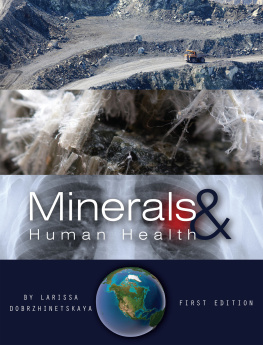
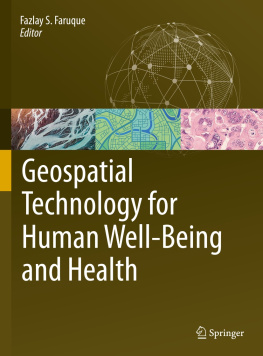
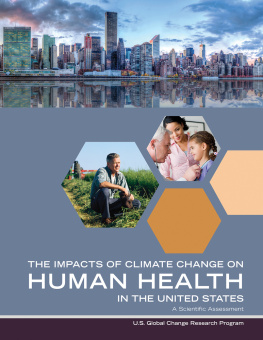


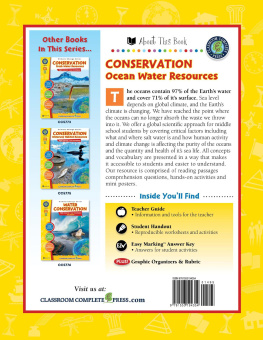


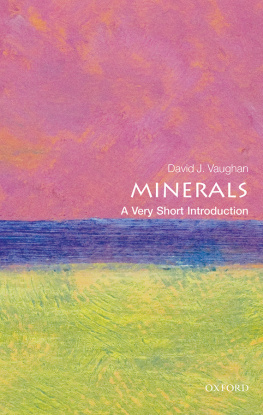
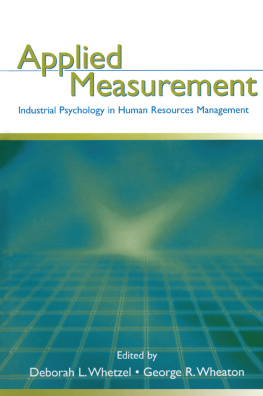


 his book is written in the form of narrative reviews and a meta-analysis of existing scientific studies and published statistical data from different databases and networks which bridge together Earths dynamics, geological and hazardous processes, minerals, rocks and environments with human and industrial activities. The connection between minerals, environments, and human health has pre-historical roots and was appreciated by all civilizations. Widely available and easy accessible rocks and minerals served as universal materials for ancient people to survive and improve their lives. Obsidian, quartz, jasper and other minerals and rocks were used by ancient humankind to make weapons to hunt and protect themselves. Clay, for example, was used for healing skin wounds and improving digestion; and clay and pigments of other minerals were used for painting and decorating bodies and religious temples.
his book is written in the form of narrative reviews and a meta-analysis of existing scientific studies and published statistical data from different databases and networks which bridge together Earths dynamics, geological and hazardous processes, minerals, rocks and environments with human and industrial activities. The connection between minerals, environments, and human health has pre-historical roots and was appreciated by all civilizations. Widely available and easy accessible rocks and minerals served as universal materials for ancient people to survive and improve their lives. Obsidian, quartz, jasper and other minerals and rocks were used by ancient humankind to make weapons to hunt and protect themselves. Clay, for example, was used for healing skin wounds and improving digestion; and clay and pigments of other minerals were used for painting and decorating bodies and religious temples. he Earth is the largest planet within the group of terrestrial planets that includes Venus, Mars, and Mercury (Fig. 1). Its diameter (d) is 12756.3 km, while Venus has d = 12103.6 km, Mars has d = 6794 km, and Mercury is the smallest one with d = 4880 km (Fig. 1). Only the Earth is a vital planet because it has a sustainable atmosphere and liquid water, which are necessary conditions to support biological life. Although life is a biological issue, evidence of life, starting from ancient, primitive micro-organisms, is recorded in terrestrial rocks and is assumed to be found in extraterrestrial planetary objects as well. Yet, the Earth is the source of geological materials such as mineral ore deposits, coal, oil, and clean underground water reservoirs that sustain life and provide energy. Therefore, the Earth represents a complex system that reflects dynamic interactions among the atmosphere, biosphere, hydrosphere, geosphere, cryosphere, and anthroposphere.
he Earth is the largest planet within the group of terrestrial planets that includes Venus, Mars, and Mercury (Fig. 1). Its diameter (d) is 12756.3 km, while Venus has d = 12103.6 km, Mars has d = 6794 km, and Mercury is the smallest one with d = 4880 km (Fig. 1). Only the Earth is a vital planet because it has a sustainable atmosphere and liquid water, which are necessary conditions to support biological life. Although life is a biological issue, evidence of life, starting from ancient, primitive micro-organisms, is recorded in terrestrial rocks and is assumed to be found in extraterrestrial planetary objects as well. Yet, the Earth is the source of geological materials such as mineral ore deposits, coal, oil, and clean underground water reservoirs that sustain life and provide energy. Therefore, the Earth represents a complex system that reflects dynamic interactions among the atmosphere, biosphere, hydrosphere, geosphere, cryosphere, and anthroposphere.